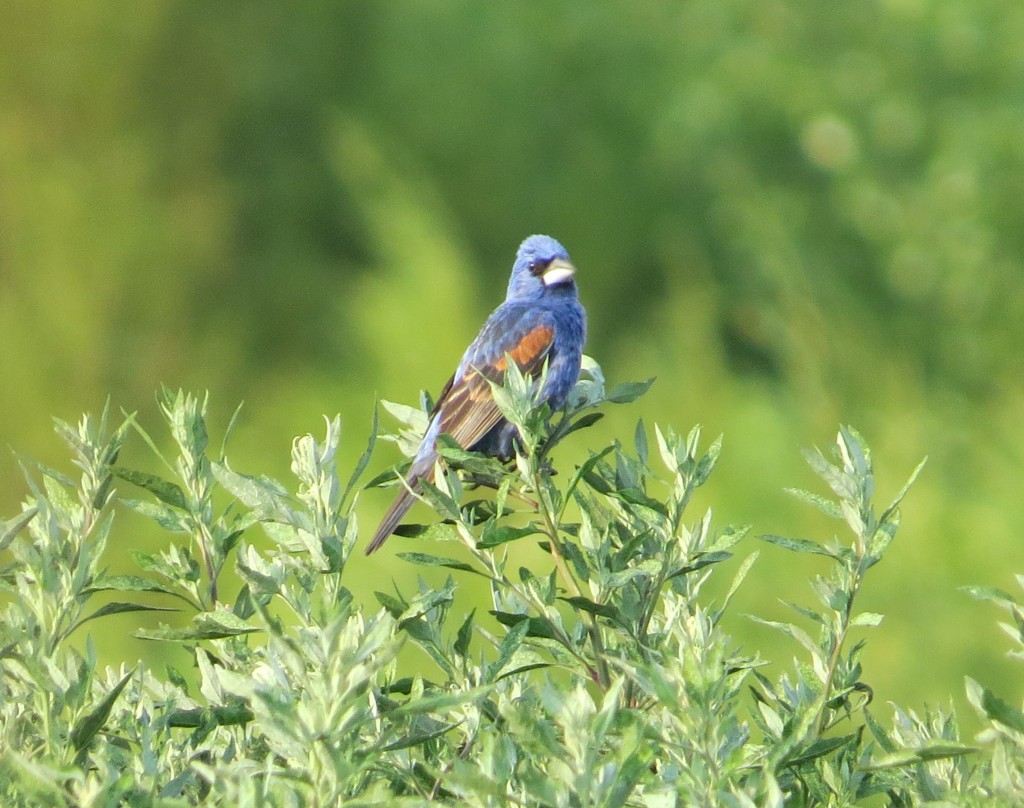
I am becoming more and more convinced that the Blue Grosbeak is expanding its range in Minnesota and growing in numbers, so I have been doing some investigating to back up my theory. I can remember when I first became a birder how I badly wanted to see a Blue Grosbeak. Imagine my surprise then, when I learned that they are a rare, regular species in the very southwestern corner of Minnesota. Specifically, Blue Mounds State Park in Rock County is the place to see them. That's where we got our lifer last year.
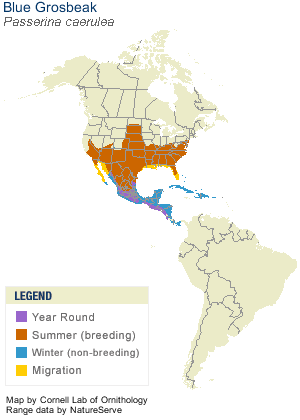
- Range map of the Blue Grosbeak from the Cornell Lab of Ornithology http://www.allaboutbirds.org/guide/blue_grosbeak/id
But then I saw them nearly two hours further to the northeast at Cottonwood in each of the last two years when they were discovered by a young birder living there. I started to get curious about this species growing in numbers and in range when this birder reported them two years in a row. Additionally he found a nest this year. The site fidelity was intriguing.
My curiosity grew even more when a local birding friend said he was hoping to someday find a Blue Grosbeak in Kandiyohi County where we live. I could hardly believe that he would think it was possible because this is even more north and east than Cottonwood. But then he told me how he and another friend found a family of Blue Grosbeaks in Renville County just six miles south of the Renville-Kandiyohi county line in 2012. So last week I decided to head to this location in Renville County which was a city compost site. I wanted to see if the Blue Grosbeaks were still around a couple years later. If they were, I wanted to document them for eBird. Some birders have been documenting their Blue Grosbeak sightings, and it is apparent that the Blue Grosbeak has gone beyond its normal Minnesota home of Rock County, the very southwestern corner of the state.
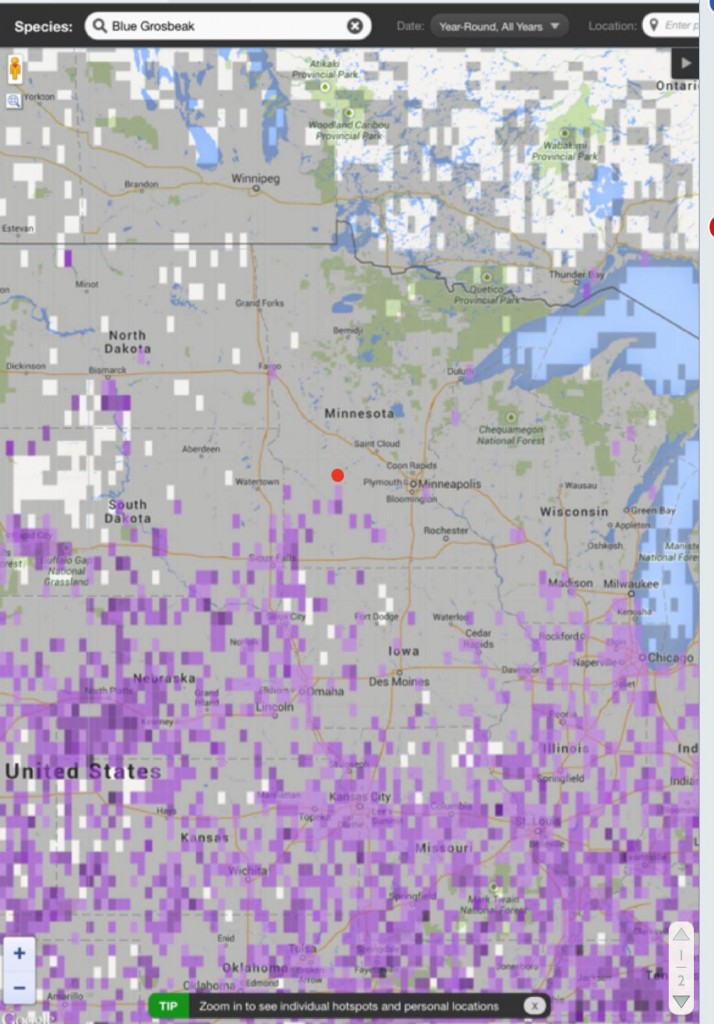
- The red dot is where we live. Blue Grosbeaks have traditionally been found in just the very southwestern corner of Minnesota which is much less territory than what this sightings map indicates
I did not find any Blue Grosbeaks at the compost site where my friends found them two years prior. Not wanting to waste a trip, I had scouted satellite imagery of the area ahead of time looking for any gravel pits or waste areas as Blue Grosbeaks prefer this type of habitat. In our sea of green, these areas are habitat islands. Unlike the arid southwest, this type of desert-wash habitat is rare here and makes for easy places to look for the Blue Grosbeak. If they are in the area, they are going to be in one of these pockets of habitat.
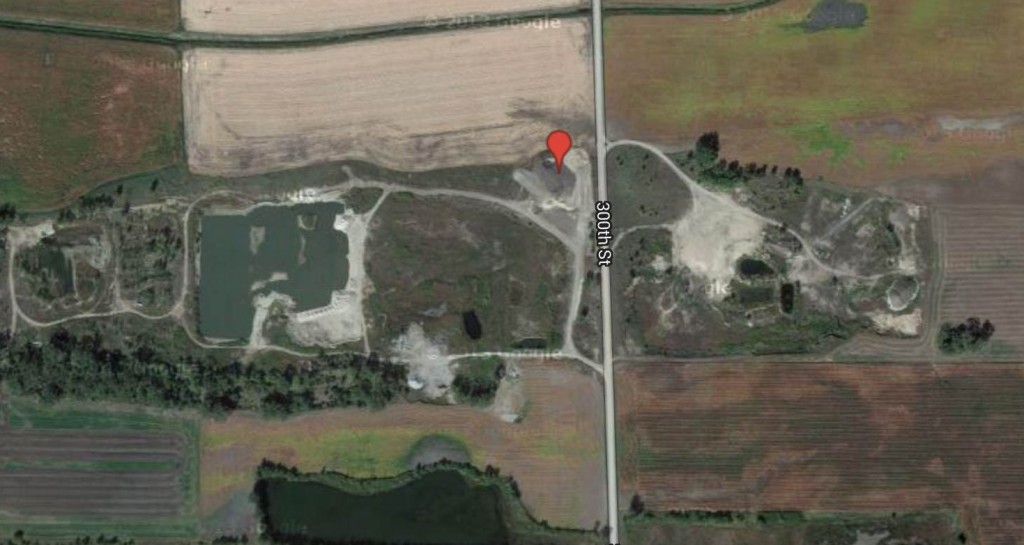
I checked out the gravel pit pictured above just a mile from where the Blue Grosbeaks were seen in 2012. Almost immediately upon arriving I heard a singing male Blue Grosbeak. I was absolutely thrilled, even more so when I finally got to lay eyes on it.
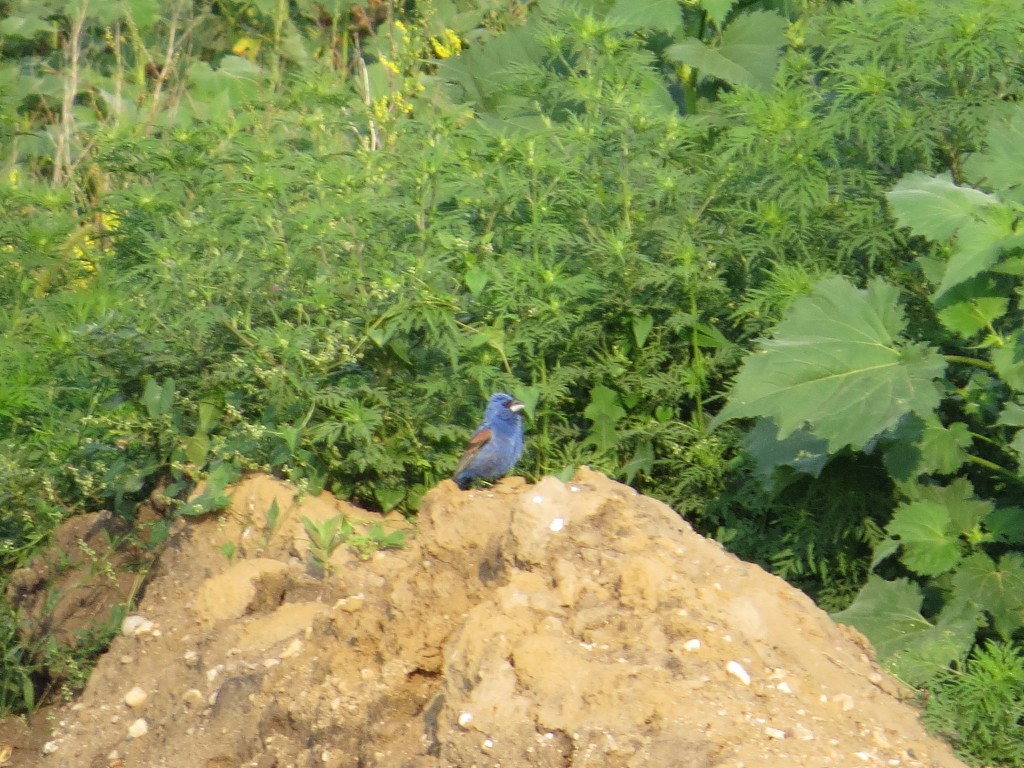
- The first Blue Grosbeak I found in Renville County.
I was pretty pleased with the find and reported the bird to the listserv, MOU-net, so other birders could see it. But after I was at home and studying satellite images again, I realized I didn't fully explore the area. It turns out that the pit I stopped at is part of about a four-mile tract of old gravel pits. I went back two days later intent to check out more of the area. When I got to the site of the Grosbeak pictured above, I ran into two birders who had just seen the bird and were listening to a second bird nearly a mile away from the first one! Now I was really excited to get my search underway. I took every north-south road that intersected this tract of gravel deposits. And on each road I found a singing male Blue Grosbeak! In all there were five male Blue Grosbeaks. It was unbelievable yet believable because of the habitat I was exploring.
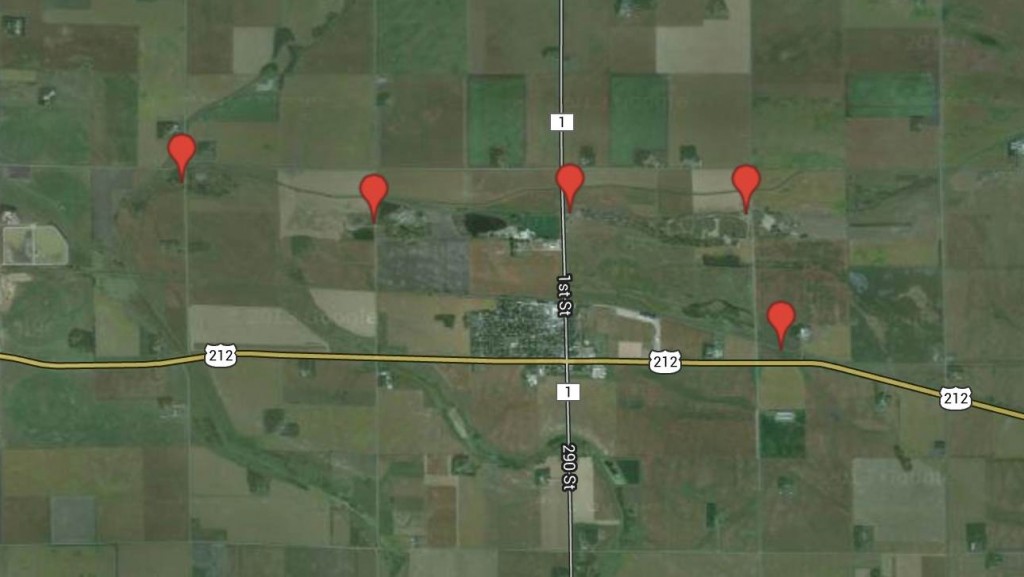
- Locations of where I found Blue Grosbeak males; the bottom-right marker is the bird found by the other birders.
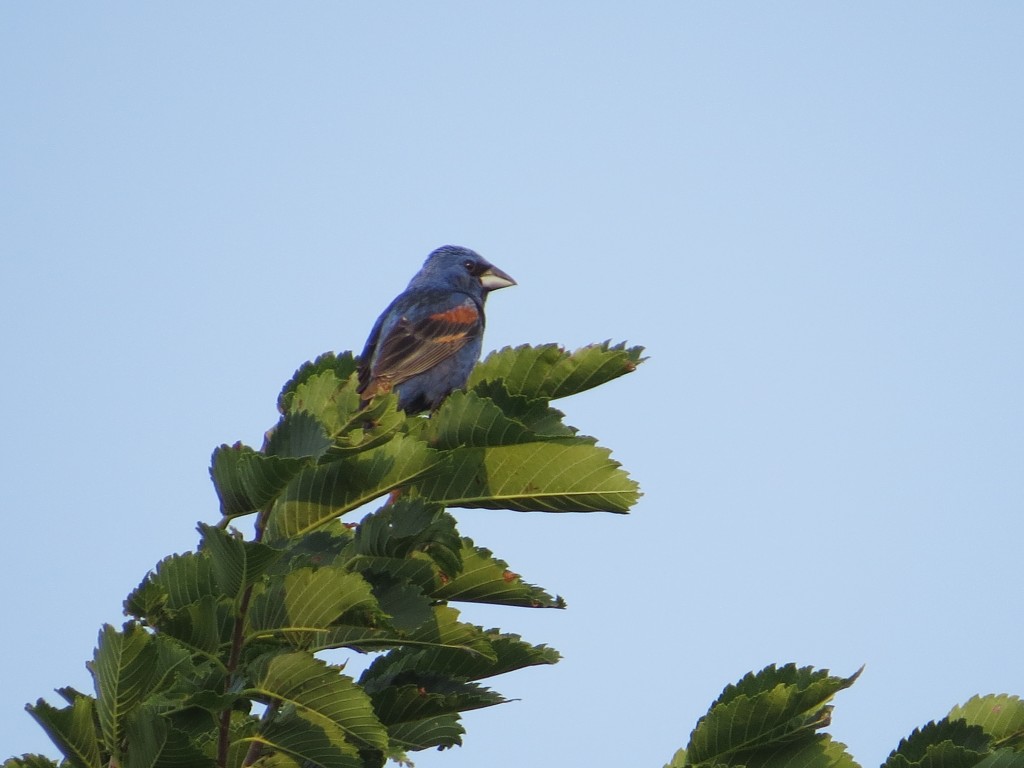
- The third Blue Grosbeak of the morning. I've been told someone later found a female with it.
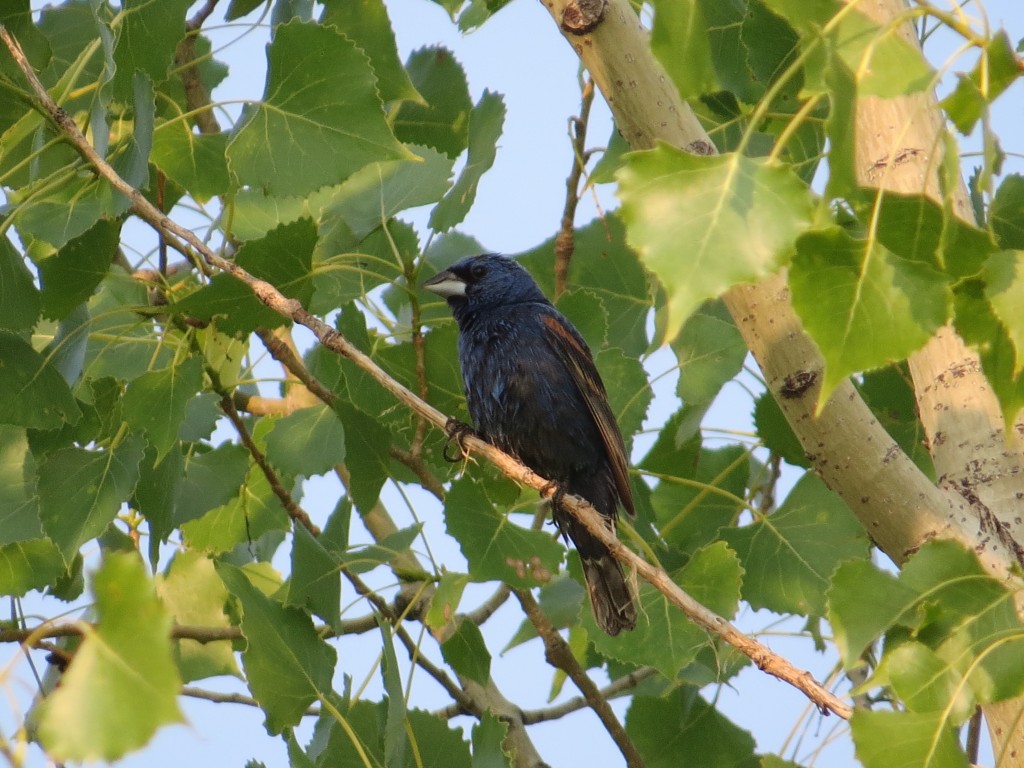
- The fourth Blue Grosbeak.
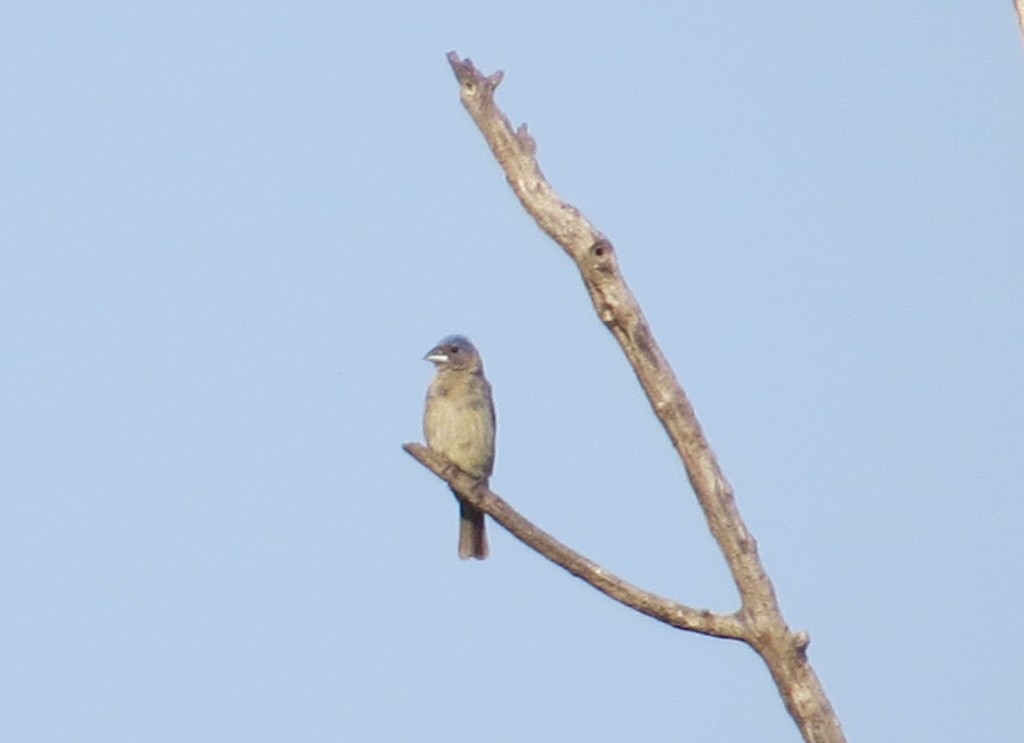
- The final Blue Grosbeak was a sub-adult male but was singing the same song as the others.
Several birders have made their way to Renville County to find some of these Blue Grosbeaks. What has been phenomenal is that they are turning up more Blue Grosbeaks at these sites and in other counties while en route! With this volume of Blue Grosbeaks so far from Rock County, it seems that this species is definitely making its home further north and east than where it is "supposed" to be. Any bit of suitable habitat in the southern half of the state should be investigated by Minnesota birders. I have been studying satellite imagery for any hint of gravel or waste areas in an area that is dominated by agricultural fields. I'm particularly interested in finding a Blue Grosbeak here in Kandiyohi County. We are hopeful that one will make the jump six miles north if one hasn't already.
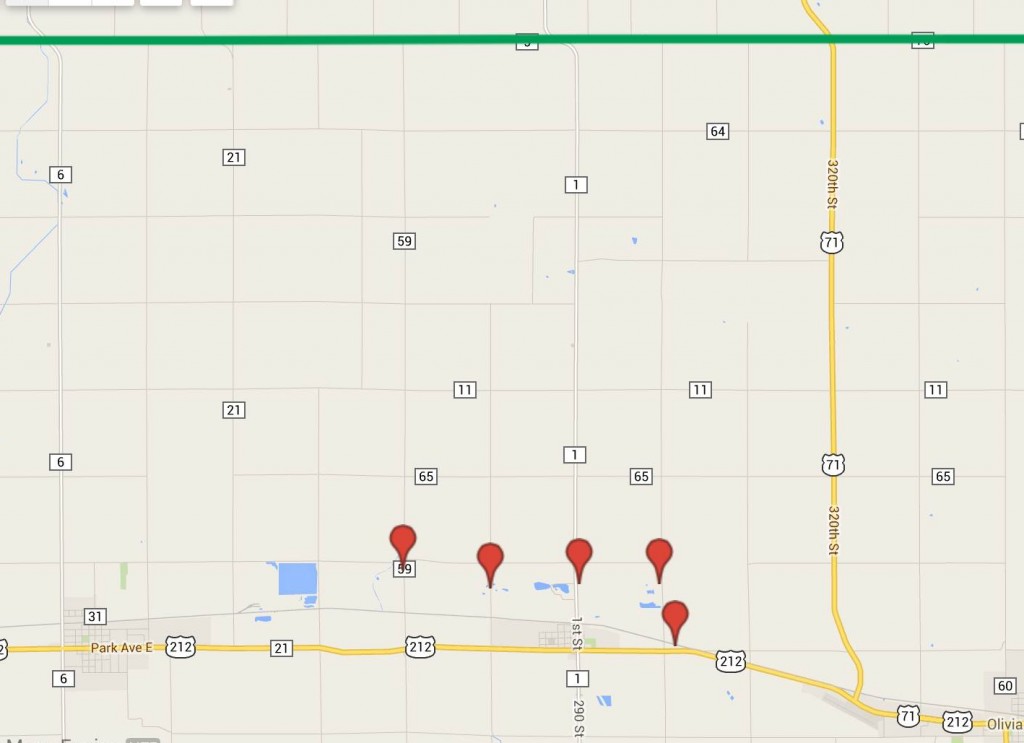
- The green line is the Kandiyohi County and Renville County Line - Blue Grosbeaks are only six miles away!
The only problem, though, is that we have no gravel pits to speak of in the southern half of our county. The best and closest habitat, a very large area of several gravel pits, is about 30 miles northeast of all these Grosbeaks.
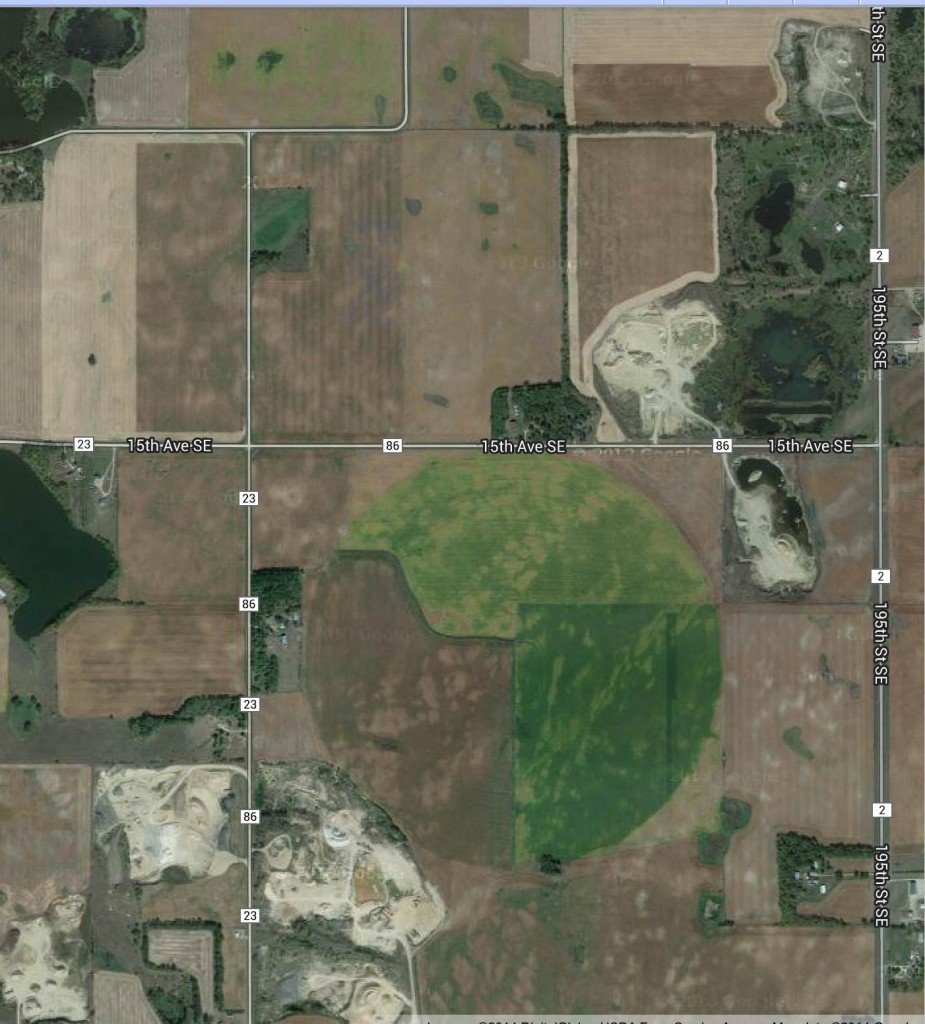
We have already been getting a lot of the necessary permissions to enter these lands to begin our search. Hopefully we can turn one up.


This sounds like a lot of fun detective work. Thanks for sharing. Pretty awesome bird to have around!
ReplyDeleteThanks Chris! It has been very exciting to document this expansion, and you're right - it is quite the bird to have around!
ReplyDeleteFive Blue Grosbeaks ... how very exciting! Great job seeking out these beautiful birds. I truly enjoyed reading about your search, Josh. So glad you were successful.
ReplyDeleteThanks Julie! It was quite a thrilling venture.
ReplyDelete